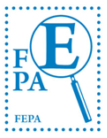Postage rate nerd’s lock down hobby
I’ve been locked down now for about four weeks. The premises of the university I work are closed. My days are usually full of meetings and discussions, so working at my kitchen table is no problem, except for my back. I sit down too much.
These difficult times have made me work long days. Running a library with no physical space is not easy. That leaves me little time of my own. But instead of doing sports or other useful matters I have continued working with my computer. My passion is postage rates and spreadsheets.
My current work station.
I love big data. Creating data sets and analyzing them is something which really helps me get focused and forget my work, cleaning and everything else which I really should do.
The mystery of single stamp postal items has puzzled me for years. Would it be possible to find out all possible different single usages of some certain stamp? In order to find this out I started to fill in spreadsheets and calculate the different possibilities.
My test set consists of 38 different denominations of Finland model 1930 definitive series ranging from 40 pennies to 300 markkas. The model was in use from 1930 to 1962. It includes the second world war period and its aftermath with big inflation, which led to many increases in postage rates. This is a real challenge.
 Second rate letter, Lappeenranta 29.9.1947, letter 25 mk, registration 10 mk, express fee 20 mk, insurance fee 35 mk, and advice of delivery fee 10 mk, total 100 mk. Source: Finnish postage rates 1875 – 2001, p. 92.
Second rate letter, Lappeenranta 29.9.1947, letter 25 mk, registration 10 mk, express fee 20 mk, insurance fee 35 mk, and advice of delivery fee 10 mk, total 100 mk. Source: Finnish postage rates 1875 – 2001, p. 92.
My original plan was to calculate all possible rates for the model 1930 definitives found in the book called “Finnish postage rates 1875 – 2001”. In addition to basic rates I wanted to include all combinations of additional fees. These are registration, express mail, insurance fee, cash on delivery, home delivery, advice of delivery, and airmail fee. However, that proved to be a lot bigger task I anticipated. No surprise, I would say.
So far I have tackled the domestic rates. I have been able to calculate about 1,1 million rates, and I assume I am about half way through. If I want to include all foreign and special agreement rates into my research, I estimate I have to calculate close to 10 million rates altogether.
The work is pretty straightforward. First I have to key in all needed basic rates into spreadsheets. The combinations can be calculated with basic functions. The fun part has been to create algorithms for filtering out the single stamp usages. With trial and error I have succeeded to do that.
Spreadsheets may look boring, but they contain a lot of information!
The result so far is that out of all possible postage rates, about 0,5% can be paid with single stamps. Naturally, the most common single usages are the ones the stamps were designed for like domestic letter or registered letter. More interesting cases are combinations of different additional fees. However, these are in most cases theoretical, because these type of items cannot be found in real life.
So what is the use of this kind of research? Very little in practice, it is more like basic research. But at least it gives an idea of the variety of single usages theoretically available. And you never know what implications basic research creates, when other people gets hold of this kind of analysis!




